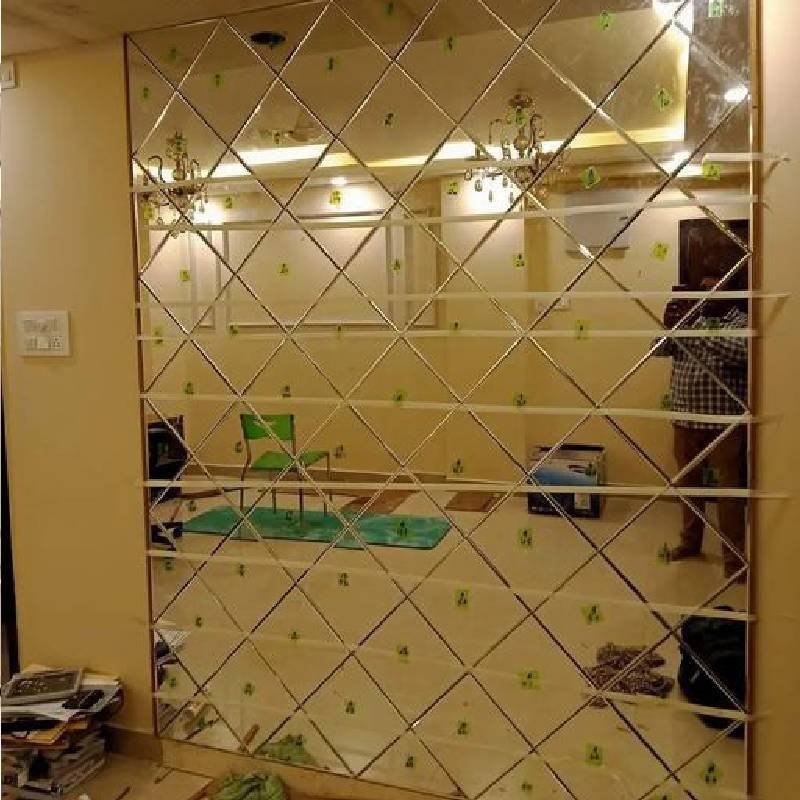The Manufacturing Process of Toughened Glass
Toughened glass, also known as tempered glass, is a type of safety glass that has been treated by controlled thermal or chemical processes to increase its strength compared to standard glass. The manufacturing of toughened glass involves several meticulous steps, ensuring that the final product meets rigorous safety and performance standards. The following outlines the main processes involved in the production of toughened glass.
1. Raw Material Selection
The first step in the manufacturing process is the selection of raw materials. The primary component of toughened glass is silica sand, which provides the base. Other additives, such as soda ash and limestone, are also included to enhance the glass's properties. These raw materials are carefully chosen to ensure consistency in quality and to achieve the desired specifications.
2. Melting
Once the raw materials are gathered, they are mixed and fed into a furnace, where they are heated to extreme temperatures, typically around 1,700 degrees Fahrenheit (about 930 degrees Celsius). This high temperature causes the materials to melt and form molten glass. The melting process requires precise temperature control and timing to ensure uniformity in the glass composition.
3. Forming
After the glass has melted, it is shaped into flat panels using various forming techniques. Common methods include roller forming, float glass process, or pressing. The float glass process is particularly popular; it involves pouring molten glass onto a bed of molten tin, where it spreads out and forms a smooth, flat surface. Once the desired thickness and dimensions are achieved, the glass is allowed to cool slightly before proceeding to the next stage.
4. Annealing
Following the forming process, the glass panels must undergo annealing, which is a controlled cooling process. The glass is slowly cooled in a temperature-regulated lehr. This step is crucial as it helps to relieve internal stresses created during the forming process, resulting in a more stable product. If this step is neglected, the glass may develop weak points, leading to potential breakage later on.
manufacturing process of toughened glass
5. Toughening
The next and most critical step is the toughening process, which significantly enhances the strength of the glass. The panels are heated to around 1,200 degrees Fahrenheit (about 650 degrees Celsius) in a tempering furnace. After reaching the desired temperature, the glass is rapidly cooled by powerful jets of cold air. This thermal treatment induces compressive stresses on the surface while keeping tensile stresses within the glass. As a result, toughened glass is much stronger than regular glass and can withstand significant impact and temperature variations.
6. Cutting and Edging
Once the toughened glass has been processed, it is cut to the required sizes and shapes. Special diamond-tipped saws are used to ensure clean cuts. After cutting, the edges are polished or beveled to enhance safety and aesthetics. Any sharp edges are smoothed to minimize the risk of injury during handling and installation.
7. Quality Control
Quality control is a vital aspect of the manufacturing process. Each batch of toughened glass undergoes rigorous testing to ensure it meets the necessary safety standards. This includes checking for flaws, measuring thickness, and verifying the strength of the glass through impact tests. Only glass that passes these tests is approved for distribution to customers.
8. Packaging and Distribution
Finally, once the glass has passed quality control, it is carefully packaged to prevent damage during transportation. Toughened glass is often used in high-stress applications, such as in buildings, facades, and vehicle windows. Proper packaging ensures that the product arrives at its destination in perfect condition.
Conclusion
The manufacturing process of toughened glass is a complex and precise operation that involves multiple stages, from raw material selection to rigorous quality control. Each step is crucial in ensuring that the final product not only meets aesthetic demands but also provides the necessary safety and durability for various applications. As technology advances, the potential for innovation in the toughened glass manufacturing process will continue to grow, leading to even greater applications in construction, design, and beyond.
 Afrikaans
Afrikaans  Albanian
Albanian  Amharic
Amharic  Arabic
Arabic  Armenian
Armenian  Azerbaijani
Azerbaijani  Basque
Basque  Belarusian
Belarusian  Bengali
Bengali  Bosnian
Bosnian  Bulgarian
Bulgarian  Catalan
Catalan  Cebuano
Cebuano  Corsican
Corsican  Croatian
Croatian  Czech
Czech  Danish
Danish  Dutch
Dutch  English
English  Esperanto
Esperanto  Estonian
Estonian  Finnish
Finnish  French
French  Frisian
Frisian  Galician
Galician  Georgian
Georgian  German
German  Greek
Greek  Gujarati
Gujarati  Haitian Creole
Haitian Creole  hausa
hausa  hawaiian
hawaiian  Hebrew
Hebrew  Hindi
Hindi  Miao
Miao  Hungarian
Hungarian  Icelandic
Icelandic  igbo
igbo  Indonesian
Indonesian  irish
irish  Italian
Italian  Japanese
Japanese  Javanese
Javanese  Kannada
Kannada  kazakh
kazakh  Khmer
Khmer  Rwandese
Rwandese  Korean
Korean  Kurdish
Kurdish  Kyrgyz
Kyrgyz  Lao
Lao  Latin
Latin  Latvian
Latvian  Lithuanian
Lithuanian  Luxembourgish
Luxembourgish  Macedonian
Macedonian  Malgashi
Malgashi  Malay
Malay  Malayalam
Malayalam  Maltese
Maltese  Maori
Maori  Marathi
Marathi  Mongolian
Mongolian  Myanmar
Myanmar  Nepali
Nepali  Norwegian
Norwegian  Norwegian
Norwegian  Occitan
Occitan  Pashto
Pashto  Persian
Persian  Polish
Polish  Portuguese
Portuguese  Punjabi
Punjabi  Romanian
Romanian  Russian
Russian  Samoan
Samoan  Scottish Gaelic
Scottish Gaelic  Serbian
Serbian  Sesotho
Sesotho  Shona
Shona  Sindhi
Sindhi  Sinhala
Sinhala  Slovak
Slovak  Slovenian
Slovenian  Somali
Somali  Spanish
Spanish  Sundanese
Sundanese  Swahili
Swahili  Swedish
Swedish  Tagalog
Tagalog  Tajik
Tajik  Tamil
Tamil  Tatar
Tatar  Telugu
Telugu  Thai
Thai  Turkish
Turkish  Turkmen
Turkmen  Ukrainian
Ukrainian  Urdu
Urdu  Uighur
Uighur  Uzbek
Uzbek  Vietnamese
Vietnamese  Welsh
Welsh  Bantu
Bantu  Yiddish
Yiddish  Yoruba
Yoruba  Zulu
Zulu 

